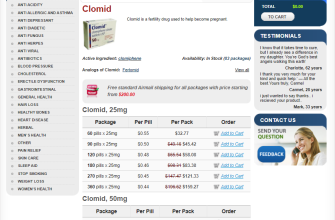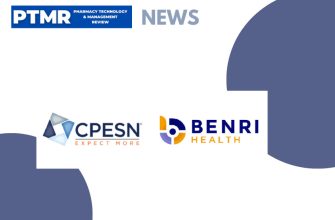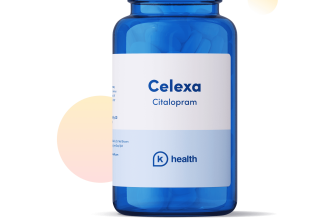Need affordable prescription drugs? Consider using a direct pharmacy in the USA. This often translates to significant savings compared to traditional retail pharmacies.
Direct pharmacies cut out the middleman, passing those savings directly to you. Many offer transparent pricing and convenient online ordering, streamlining the process of obtaining your necessary medications. Compare prices and explore options – you may find substantial differences.
Remember to verify the legitimacy of any online pharmacy before placing an order. Look for licensing information and customer reviews to ensure safe and reliable service. Always consult your doctor before making any changes to your medication regimen.
Several reputable direct pharmacies operate within the USA, providing a variety of medications at competitive prices. Do your research to find the best fit for your needs and budget. Checking medication costs is a simple step that could lead to substantial long-term savings.
- Direct Pharmacy USA: A Comprehensive Guide
- Legality and Regulation of Direct Pharmacies in the USA
- Licensing and Compliance
- Verifying Legitimate Pharmacies
- Consumer Protections
- Prescription Requirements
- Finding Reputable and Licensed Direct Pharmacies
- Comparing Prices and Services Offered by Direct Pharmacies
- Understanding Prescription Requirements and Ordering Process
- Ensuring the Authenticity and Safety of Medications
- Checking Medication Authenticity
- Safe Medication Practices
- Understanding Your Medications
- Reporting Suspicious Activity
- Online Pharmacy Selection
- Using Secure Payment Methods
- Potential Risks and Benefits of Using Direct Pharmacies
- Cost Savings and Convenience
- Potential Risks
- Recommendations
- Protecting Your Privacy and Security When Ordering Online
- Customer Support and Dispute Resolution with Direct Pharmacies
- Understanding Your Rights
- Dispute Resolution Process
- Example of Customer Service Expectations
- Legal Recourse
Direct Pharmacy USA: A Comprehensive Guide
Start by verifying the pharmacy’s legitimacy with your state’s board of pharmacy. This confirms they operate legally and meet safety standards.
Check for accreditation from organizations like the Verified Internet Pharmacy Practice Sites (VIPPS) program. VIPPS accreditation signals a commitment to high standards.
Carefully review the pharmacy’s website for clear contact information, including a physical address and phone number. Avoid pharmacies lacking this transparency.
Look for customer reviews and testimonials on independent platforms like Trustpilot. These provide insight into others’ experiences.
Understand the pharmacy’s return policy. Knowing their process for handling returns or medication errors offers crucial protection.
Compare prices across multiple reputable online pharmacies to ensure you’re getting the best value. Price differences can be significant.
Confirm the pharmacy’s secure ordering and payment methods. Prioritize pharmacies using robust encryption protocols like SSL.
Always consult your doctor before ordering medications online. They can advise on the safety and appropriateness of the drugs for your condition.
Report any suspicious activity or concerns to your state’s board of pharmacy or the appropriate authorities. Your feedback helps protect others.
Store your medications according to the instructions provided. Improper storage can compromise their potency and safety.
Remember to dispose of unused medications responsibly. Check with your local pharmacy or waste disposal authority for guidance.
Disclaimer: This guide offers advice, not medical counsel. Always consult your physician or pharmacist for personalized medication advice.
Legality and Regulation of Direct Pharmacies in the USA
Direct pharmacies in the US operate under strict federal and state regulations. The Food and Drug Administration (FDA) oversees drug safety and efficacy, ensuring medications are genuine and meet quality standards. State boards of pharmacy also regulate the licensing and operation of pharmacies, including those selling drugs online.
Licensing and Compliance
Legitimate direct pharmacies hold licenses from their state’s board of pharmacy and comply with federal laws like the Controlled Substances Act (CSA). The CSA regulates controlled substances, requiring pharmacies to maintain strict records and follow specific dispensing procedures. Failure to comply results in severe penalties, including license revocation and criminal prosecution.
Verifying Legitimate Pharmacies
Consumers should always verify a pharmacy’s license and accreditation through their state board of pharmacy website. Look for the Verified Internet Pharmacy Practice Sites (VIPPS) accreditation, indicating compliance with rigorous standards. Check the pharmacy’s physical address to ensure it’s not a mail drop and confirm its legitimacy through independent sources. Beware of suspiciously low prices; these often signal counterfeit medications.
Consumer Protections
The FDA and state boards provide resources and complaint mechanisms for consumers encountering issues with direct pharmacies. Reporting suspicious activities, such as receiving counterfeit drugs or experiencing poor customer service, is encouraged. These reports assist regulatory bodies in identifying and addressing rogue operators.
Prescription Requirements
All prescription medications must be obtained with a valid prescription from a licensed physician. Direct pharmacies should verify prescriptions before dispensing. They cannot provide medications without a legitimate prescription. Sharing prescriptions or obtaining medications illegally carries significant health risks and legal repercussions.
Finding Reputable and Licensed Direct Pharmacies
Verify pharmacy licensing through your state board of pharmacy’s website. Each state maintains a database; use their search function to confirm legitimacy.
Check for accreditation from organizations like the Verified Internet Pharmacy Practice Sites (VIPPS) program. VIPPS accreditation indicates adherence to high standards for online pharmacy practices.
Scrutinize the pharmacy’s website for a physical address and contact information. Legitimate pharmacies readily provide this data. Avoid sites lacking transparency.
Read online reviews from other customers. Pay attention to consistent feedback about order fulfillment, customer service, and medication authenticity.
Review the pharmacy’s privacy policy to ensure it protects your personal and health information. Look for adherence to HIPAA regulations.
Consult your doctor before using any online pharmacy, especially for prescription medications. Your physician can help assess the pharmacy’s reliability and the safety of your medication choices.
Compare prices across several licensed pharmacies. While price should not be the sole deciding factor, excessive discounts can signal potential problems.
Be wary of pharmacies offering medications without a prescription. This practice is illegal and unsafe. Always obtain a valid prescription from your doctor.
Use secure payment methods like credit cards or PayPal. Avoid sending cash or wire transfers, as these transactions are harder to trace and recover.
Report suspicious pharmacies to your state board of pharmacy and the appropriate federal authorities. This helps protect others from potential fraud or harm.
Comparing Prices and Services Offered by Direct Pharmacies
Start by checking multiple direct pharmacies. Don’t rely on a single price quote.
- Compare prices for the exact same medication, including dosage and quantity. Price discrepancies can be significant.
- Consider shipping costs; these can drastically alter the total cost, especially for smaller orders. Look for pharmacies offering free or discounted shipping options.
- Examine the pharmacy’s reputation. Check independent reviews and ratings from other customers. Look for signs of consistent positive feedback regarding shipping speed, customer service, and medication quality.
Beyond price, evaluate these crucial service aspects:
- Prescription handling: Some pharmacies offer online prescription transfers, simplifying the process. Verify their procedure before ordering.
- Customer support: A responsive and helpful customer service team is vital. Check their availability (phone, email, chat) and response time.
- Medication verification: Confirm their adherence to safety standards and licensing requirements. Legitimate pharmacies clearly display their accreditation information.
- Return policies: Understand their policies on damaged or incorrect shipments. A clear return policy is a sign of a reputable business.
Use a spreadsheet or comparison website to track your findings. This systematic approach helps avoid decision fatigue and ensures you choose the best option for your needs.
Remember to always prioritize your health and safety. Only use licensed and accredited pharmacies.
Understanding Prescription Requirements and Ordering Process
First, you’ll need a valid prescription from a licensed US physician. This prescription must include your name, the medication name, dosage, and quantity. Faxing or uploading a clear photo of your prescription is usually sufficient.
Next, create an account on the pharmacy website. Provide accurate personal and contact information for seamless order processing and delivery. You’ll likely need to confirm your address and payment details.
The pharmacy verifies your prescription and processes your order. They might contact you to clarify details. Expect a confirmation email after the order is accepted.
Many pharmacies offer various payment options, including credit cards, debit cards, and sometimes even health savings accounts (HSAs). Check the specific options available.
Delivery times vary depending on your location and the pharmacy’s shipping methods. Track your order online using the provided tracking number. Standard delivery typically takes a few business days.
| Step | Action |
|---|---|
| 1 | Obtain a valid prescription. |
| 2 | Create an online account. |
| 3 | Submit your prescription. |
| 4 | Choose your payment method. |
| 5 | Track your order. |
Contact customer support if you have any questions or encounter any issues. Most pharmacies provide multiple contact methods, such as phone, email, or live chat.
Ensuring the Authenticity and Safety of Medications
Verify the pharmacy’s license and accreditation. Look for verification from organizations like the National Association of Boards of Pharmacy (NABP) or similar reputable bodies. This ensures the pharmacy operates legally and adheres to safety standards.
Checking Medication Authenticity
- Inspect the packaging: Check for inconsistencies in printing, unusual seals, or damage. Counterfeit drugs often have poor quality packaging.
- Verify the medication’s unique identifier: Many medications now have unique serial numbers or codes. Check these against the manufacturer’s database if possible.
- Use a reliable medication verification app: Several apps can help you scan medication packaging and verify authenticity against official databases.
- Contact the manufacturer directly: If you have doubts about your medication, contacting the manufacturer for verification is a good way to ensure its legitimacy.
Safe Medication Practices
Store medications according to the instructions provided. This generally includes keeping them in a cool, dry place away from direct sunlight and moisture. Improper storage can degrade medications, rendering them ineffective or even harmful.
Understanding Your Medications
- Read the medication guide carefully: This will provide detailed information about the medication, its potential side effects, and interactions with other drugs or foods.
- Consult your pharmacist or doctor: Discuss any questions or concerns about your medications with a qualified professional. They can offer personalized advice and support.
- Dispose of expired medications properly: Never flush medications down the toilet or throw them in the trash. Check with your local pharmacy or waste management facility for safe disposal options.
Reporting Suspicious Activity
Report any suspicions of counterfeit medications to the appropriate authorities. This can help prevent others from being affected by potentially dangerous or ineffective medications. Contact your local authorities or the FDA (in the US).
Online Pharmacy Selection
Choose pharmacies with secure websites and transparent policies. Look for pharmacies that clearly display their contact information, physical address, and licensing details. Avoid pharmacies that lack this critical information.
Using Secure Payment Methods
Use secure payment gateways to minimize the risk of financial fraud. Look for sites that use SSL encryption (indicated by “https” in the website address) to protect your personal and financial data.
Potential Risks and Benefits of Using Direct Pharmacies
Direct pharmacies offer convenience and potential cost savings. However, proceed with caution. Verify the pharmacy’s legitimacy through state licensing boards and the National Association of Boards of Pharmacy (NABP) website. Look for verification seals and check online reviews to gauge customer experiences. Compare prices across multiple sources, as significant discrepancies can indicate a potential problem.
Cost Savings and Convenience
Many direct pharmacies offer lower prices than traditional brick-and-mortar pharmacies. This price difference can be substantial, particularly for medications without generic alternatives. The convenience of home delivery is another major advantage, especially for individuals with mobility challenges or busy schedules. However, remember that delivery times vary.
Potential Risks
Counterfeit medications represent a significant concern. Purchase only from verified pharmacies adhering to strict quality control standards. Unauthorized pharmacies might sell expired, substandard, or even dangerous drugs. Privacy is another factor; ensure the pharmacy utilizes secure data transmission methods. Report any suspicious activity immediately to the authorities. Finally, understand that customer service levels can differ significantly between direct and traditional pharmacies.
Recommendations
Always consult your physician or pharmacist before switching to a direct pharmacy. They can help evaluate the legitimacy of the pharmacy and confirm medication compatibility. Maintain a record of all prescriptions and transactions for your protection. Check your insurance coverage, as some plans might not cover medications purchased through direct pharmacies.
Protecting Your Privacy and Security When Ordering Online
Always use a secure website; look for “https” in the URL and a padlock icon in your browser. This indicates encrypted communication, protecting your information during transmission.
Choose pharmacies with strong privacy policies. Read their policies carefully; understand how they collect, use, and protect your data. Verify their commitment to HIPAA compliance in the US.
Use strong, unique passwords for online accounts. Avoid reusing passwords across different sites. Consider using a password manager to generate and store secure passwords.
Be cautious about phishing emails. Legitimate pharmacies will never request personal information via email. Report suspicious emails to the appropriate authorities.
Pay with secure payment methods. Credit cards offer better fraud protection than debit cards. Avoid using public Wi-Fi for online transactions.
Check your credit card and bank statements regularly for unauthorized charges. Report any suspicious activity immediately to your financial institution.
Only order from licensed and verified online pharmacies. Check the National Association of Boards of Pharmacy (NABP) website for verified online pharmacies.
Contact customer service directly if you have any questions or concerns about your order or your privacy. A reputable pharmacy will be responsive and helpful.
Keep your personal information updated. Ensure your contact information is accurate on your pharmacy account to receive important updates and notifications.
Customer Support and Dispute Resolution with Direct Pharmacies
Check the pharmacy’s website for contact information – phone number, email address, and live chat options. Look for a dedicated customer service section outlining their hours of operation and response times. A reliable pharmacy will provide multiple avenues for contact.
Understanding Your Rights
Familiarize yourself with the pharmacy’s return policy and refund procedures. These details should be clearly stated on their website or provided upon request. Understand the timeframe for processing returns and refunds.
If you encounter a problem with your order–incorrect medication, damaged packaging, or late delivery–document everything. Take photos of the damaged goods or incorrect medications and retain copies of your order confirmation and tracking information. Keep records of all communication with the pharmacy.
Dispute Resolution Process
First, attempt to resolve the issue directly with the pharmacy’s customer service department. Clearly explain the problem and provide supporting documentation. A written complaint, sent via certified mail, often yields better results.
If you cannot resolve the issue directly, consider contacting your state’s board of pharmacy or the relevant regulatory agency. They can investigate complaints and potentially mediate disputes. Your credit card company or payment provider may also be able to assist in resolving billing issues.
Example of Customer Service Expectations
| Aspect | Expectation |
|---|---|
| Response Time | Within 24-48 hours for email inquiries; immediate assistance via live chat (if available). |
| Resolution Time | Full resolution of most issues within 7-10 business days. |
| Communication | Clear, concise, and professional communication throughout the entire process. |
| Accessibility | Multiple methods for contacting customer support (phone, email, live chat). |
Legal Recourse
As a last resort, you may need to consult an attorney specializing in consumer protection or pharmaceutical law. They can advise on your legal options and represent you in court if necessary.










